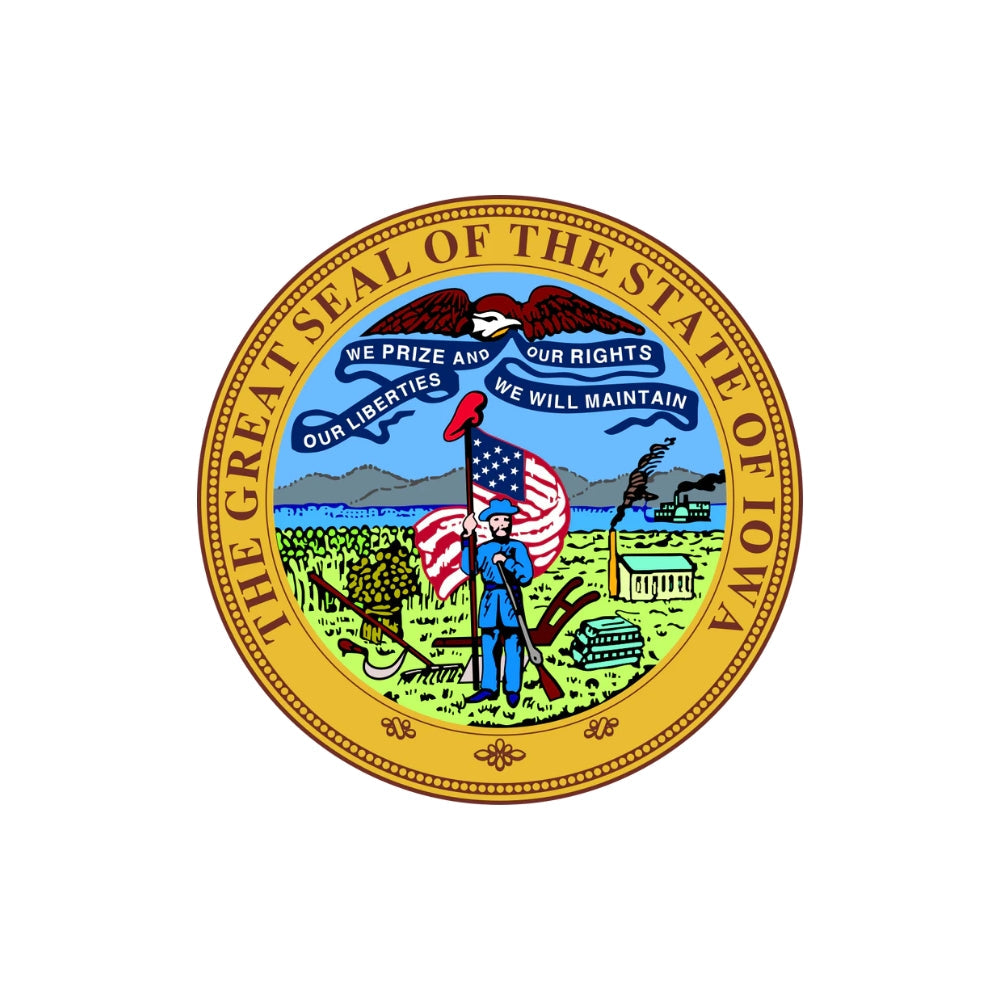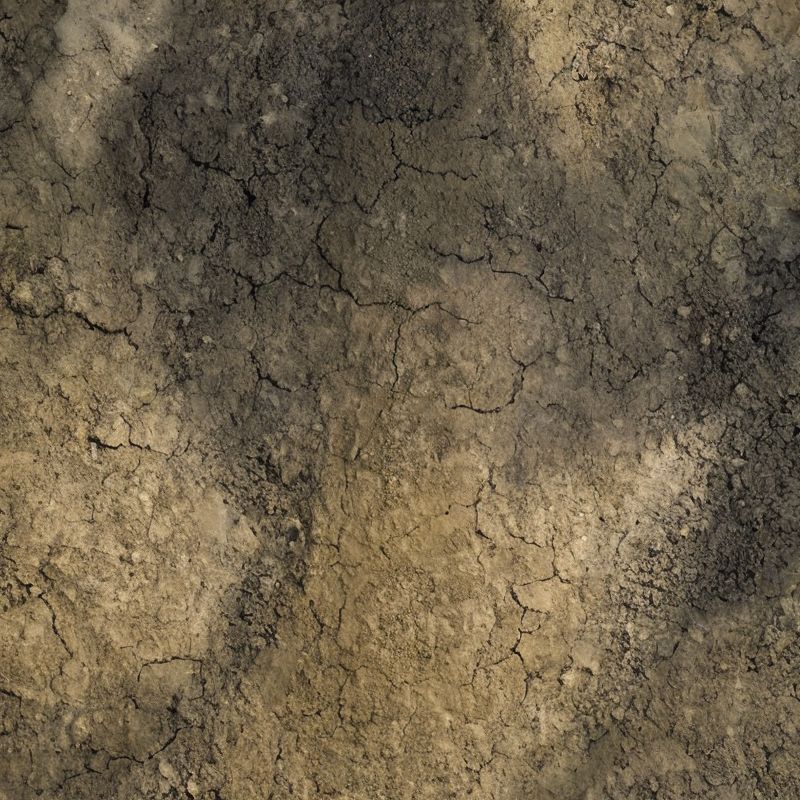Explore the Fascinating History of Iowa
Take our IowaTrivia Quizzes for a Chance to Win a 6-Month Subscription to History By Mail!

The History of Iowa
Journey Through Iowa Trivia
Welcome to our Iowa History and Trivia Page, proudly presented by History By Mail. Join us as we embark on a journey through the captivating past and cultural tapestry of the Hawkeye State. From ancient Native American civilizations to European exploration and the modern era, we'll explore Iowa's hidden gems and challenge your knowledge with entertaining quizzes, including Iowa trivia questions and Iowa State Fair trivia.
Iowa, famously known as the Hawkeye State, is a land of extraordinary history and diverse heritage. From the indigenous tribes who first inhabited the region, such as the Ioway, Meskwaki, and Sioux, to the impact of French and American exploration and the establishment of settlements, Iowa holds a captivating legacy. From the vibrant city of Des Moines to the rolling landscapes of the Mississippi River Valley, the state showcases a blend of cultures, agricultural landscapes, and a deep connection to its Native American and European roots.
Join us as we unravel the intriguing history and trivia of Iowa, delving into its role in shaping American history, its contributions to agriculture and industry, and the fascinating stories that make it a unique and cherished part of our nation's heritage. Test your knowledge with engaging Iowa trivia, and discover the Hawkeye State's captivating past.
Facts about Iowa
State Abbreviation: IA
Capital: Des Moines
Name Origin: Experts don’t agree on how Iowa got its name. Some say that the name comes from the Ioway tribe.
Nickname: The Hawkeye State
Statehood: December 28, 1846 (29th State)
State Motto: “Our liberties we prize and our rights we will maintain”
Iowa's Flag
The state flag of Iowa is a beautiful symbol that represents the history and values of the Hawkeye State. The flag features a vertical tricolor design consisting of three stripes of blue, white, and red. The blue stripe represents loyalty, truth, and justice, while the white stripe symbolizes purity and peace. The red stripe represents courage, valor, and resilience.
At the center of the flag is a bald eagle holding a blue streamer in its beak. The streamer bears the state motto, "Our Liberties We Prize and Our Rights We Will Maintain," which reflects the strong spirit of freedom and determination of the people of Iowa.
Iowa's Great Seal
In 1839, Iowa introduced its inaugural seal featuring a straightforward depiction of an American eagle wielding a bow and arrow. Following Iowa's statehood in 1846, a committee crafted a fresh seal that gained adoption in 1847. In the forefront, a soldier grasps an American flag and liberty cap in one hand, while holding a gun in the other. Positioned behind him are several symbolic elements: a plow, sickle, and rake preceding a field and a sheaf of wheat; lead slabs; and a lead furnace. Flowing in the backdrop is the Mississippi River, with the steamship Iowa navigating its waters. Above, an eagle soars, carrying a scroll bearing the state motto.

--- State Trivia #1 ---
History of Iowa
The Sauk and Meskwaki were the most influential indigenous nations in what is now known as Iowa. These closely related peoples were displaced westward by the Haudenosaunee (also known as the Iroquois) and later by the French, eventually settling in Iowa during the 1700s. The first Europeans to explore the region were French explorers Jacques Marquette and Louis Joliet in 1673. The United States acquired the land in 1803 through the Louisiana Purchase.
Iowa was initially designated as the Iowa Indian Territory, and conflicts between settlers and natives in neighboring Illinois led to the displacement of Upper Mississippi tribes to the west bank of the river, into what is now Iowa. These conflicts culminated in the Black Hawk War in 1832 and 1837. By 1852, the United States had removed all native nations from Iowa, and today's native population in Iowa is descended from the Meskwaki and Sauk tribes, who later repurchased land from the state.
In 1846, when Iowa became a state, its capital was Iowa City. However, the more centrally located Des Moines became the new capital in 1857. During this period, a significant number of European settlers immigrated to the Midwest, drawn by the plentiful farmland. These settlers played a crucial role in the development of the state's railroad system in the 1850s. Iowans showed strong support for Abraham Lincoln and contributed 75,000 troops to the Union during the Civil War.
During the 1930s, Iowa faced agricultural difficulties that affected the entire nation. In response, proud Iowan Henry A. Wallace devised a system of farm subsidies, which involved paying farmers not to plant crops on their entire fields. This measure helped stabilize crop prices and allowed the soil to recover. Another notable Iowan, Norman Borlaug, won the Nobel Prize in the 1940s for his groundbreaking plant research. Since then, Iowa has experienced significant growth in its manufacturing sector.
For visitors to Iowa, notable attractions include the Herbert Hoover birthplace and library near West Branch, the Amana Colonies, Fort Dodge Historical Museum, Fort, and Stockade, and the Effigy Mounds National Monument. These sites offer glimpses into Iowa's diverse history and provide opportunities to explore its rich cultural heritage.
State Symbols
Fun Facts
- Over 200 prehistoric earthen mounds in the shapes of giant panthers, bison, deer, and other animals stand at Effigy Mounds National Monument. The mounds are considered sacred to many Native Americans, and they may have been used by tribes as territory markers.
- President Herbert Hoover, television host Johnny Carson, showman Buffalo Bill Cody, and Mildred Wirt Benson (who wrote the Nancy Drew detective series under the pen name Caroline Keene) were all born in Iowa.
- The house that inspired artist Grant Wood’s famous painting “American Gothic” stands in Eldon, Iowa. It’s a top selfie spot: Visitors are encouraged to copy the pose of the people featured in the painting!"
--- State Trivia #2 ---

Things To Do in Iowa
- Explore the Bridges of Madison County: Visit the picturesque covered bridges made famous by Robert James Waller's novel and the subsequent film adaptation. Take a scenic drive through Madison County, stopping at the various bridges to appreciate their historic charm and enjoy the beautiful rural landscapes.
- Discover the Iowa State Capitol: Located in Des Moines, the Iowa State Capitol is an architectural marvel and a symbol of the state's rich history. Take a guided tour to explore the stunning interior, including the magnificent rotunda and legislative chambers, and learn about Iowa's government and heritage.
- Visit the Field of Dreams: Baseball fans and movie enthusiasts will delight in a visit to the Field of Dreams in Dyersville. Walk onto the iconic baseball field, where the movie was filmed, and experience the magic and nostalgia of this beloved film location. Play catch, take in the scenic views, and embrace the spirit of the game.
- Explore the Amana Colonies: Immerse yourself in the unique culture and heritage of the Amana Colonies, a group of historic German communal settlements. Wander through the charming villages, browse the local shops, sample traditional German cuisine, and learn about the fascinating history of this tight-knit community.
- Enjoy Outdoor Recreation at the Great River Road: Follow the scenic Great River Road along the Mississippi River and indulge in outdoor activities. Hike through picturesque state parks, go boating or fishing on the river, or simply relax and take in the breathtaking views. Don't miss the opportunity to spot wildlife, witness stunning sunsets, and connect with nature in this serene setting.

General Map of Iowa
Iowa, known as the "Hawkeye State," is a captivating destination located in the Midwest region of the United States. Renowned for its charming small towns, breathtaking landscapes, and rich agricultural heritage, Iowa offers a wealth of experiences for visitors to enjoy. From exploring vibrant cities to immersing in the beauty of its countryside, Iowa invites travelers to embark on a memorable journey filled with diverse attractions, warm hospitality, and a deep connection to its cultural roots.
Famous People From Iowa
--- State Trivia #3 ---
FREQUENTLY ASKED QUESTIONS (FAQ) ABOUT IOWA
Iowa is often referred to as the "Hawkeye State." This nickname originates from a character in James Fenimore Cooper's novel "The Last of the Mohicans." It was adopted due to the state's prominent involvement during the Civil War.
Iowa holds the first-in-the-nation caucuses during the U.S. presidential election cycle. This event garners significant attention as it influences the trajectory of the presidential primaries and campaign strategies.
Yes, Pulitzer Prize-winning author and literary icon, Grant Wood, hailed from Iowa. His most famous work, "American Gothic," is a renowned painting depicting a farmer and his daughter in front of a distinctive house.
Iowa sent a significant number of soldiers to fight for the Union during the Civil War. The state's commitment to the cause earned it the "Hawkeye State" nickname and highlighted its patriotic spirit.
Related Resources
- Official Website of the State of Iowa: The official website provides information about the state government, services, attractions, and more. Visit: https://www.iowa.gov/
- Travel Iowa: Explore Iowa's attractions, events, outdoor activities, and plan your trip to the state. Visit: https://www.traveliowa.com/
- Iowa Department of Cultural Affairs: Discover Iowa's rich cultural heritage, arts, history, and cultural resources. Visit: https://iowaculture.gov/
- Iowa Department of Natural Resources: Learn about Iowa's natural resources, state parks, trails, wildlife, and conservation efforts. Visit: https://www.iowadnr.gov/
- Iowa State Historical Society: Explore Iowa's history, historic sites, museums, and educational resources. Visit: https://iowaculture.gov/history
- Iowa Tourism Office: Find information on tourism in Iowa, including attractions, festivals, dining, and accommodations. Visit: https://www.traveliowa.com/
- Iowa State Parks: Discover Iowa's state parks and recreation areas, offering opportunities for outdoor activities such as camping, hiking, boating, and more. Visit: https://www.iowadnr.gov/Places-to-Go/State-Parks-Rec-Areas
- Field of Dreams Movie Site: Visit the iconic baseball field from the movie "Field of Dreams" and explore the site's attractions and events. Visit: https://www.fieldofdreamsmoviesite.com/
- Amana Colonies: Experience the historic Amana Colonies, a group of seven villages known for their German heritage, craftsmanship, and unique shops and restaurants. Visit: https://www.amanacolonies.com/
- National Mississippi River Museum and Aquarium: Discover the Mississippi River's rich history, ecology, and wildlife through exhibits, interactive displays, and aquariums. Visit: https://www.rivermuseum.com/
- Iowa State Fair: Learn about one of the largest state fairs in the United States, featuring entertainment, livestock shows, agricultural exhibits, rides, and delicious food. Visit: https://www.iowastatefair.org/



